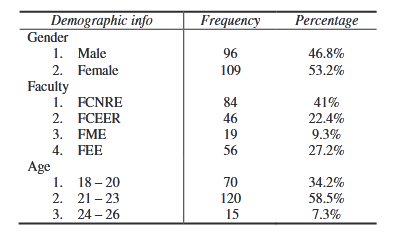Research Paper Example – Samples for Students

Quick Navigation
Research papers are not restricted to a particular field. Thus, it remains a hard nut to crack to manage the diversity of research papers. Looking at a research paper example will give you an idea of ‘Writing my paper for me‘. Let us begin with what is a research paper and then take a look at the example.
Research Paper- Defined
A research paper is the final outcome of a research process that involves synthesis of research, critical analysis, evaluation of sources, organization, and composition. To develop a research paper, one must have a strong knowledge of the topic along with critical thinking and analytical skills. As a student, you may be required to write different types of research papers like a survey research paper, argumentative research paper, cause-and-effect research paper, analytical research paper, reports research paper, interpretative research paper, experimental research paper, etc.
To get started with research paper writing, it is always better to draft a research paper outline. Continue reading to know when and how to prepare a research paper outline.
Preparing an Outline for Research Paper Writing
A rough representation of the research paper is called an outline. To prepare an outline, the very first step is to finalize the best one from the best research paper topics. Choosing a topic, undoubtedly, will be time taking and brain-wracking. Thereafter, you have to move into an in-depth study of the chosen topic. This means you have to look for data that can be from primary or secondary sources, study previous research conducted on the topic which gives you background knowledge on the topic, review the materials related to the topic and compile and organize all the information you have collected. While researching, make sure you conduct wide research and take into consideration the ones that are significant, relevant, valid, and original.
Reviewing the related literature, you will come across a gap in previous studies, or an issue that hasn’t been addressed. This helps in developing a strong research question which in turn helps to craft a strong thesis statement.
So, after you have collected the relevant information, developed the research question, and prepared a thesis, it’s time to organize everything into a formal structure which is an outline. The outline adheres to a standardized format. But mostly has the following components that are presented in form of headings and points. Each heading and subheading contain a brief description of the same.
- Research Paper Abstract: A summary of your paper is written at the end of your paper.
- Introduction: Contains the topic description, research problem, and thesis statement.
- Literature Review: Contains the background information about the topic- what has already been studied, and what has been found.
- Research Methodology: This contains the research methodology framework you have designed that includes the approach, strategy, methods of data collection, and analysis.
- Data Analysis: Contains what you are analyzing, and how you are analyzing. This is a crucial step in your study as you have to examine every piece of data in detail to develop or discover essential features or meanings.
- Results: Results are findings and implications that your analysis indicates.
- Conclusion: You once again go over the thesis statement and rest of the paper in the conclusion paragraph. Restate the objectives and summarize the findings and what the study has accomplished.
- References: Contains all the sources you have consulted according to the citation format instructed.
Research Paper Example
Topic: The Correlation Between Anxiety and Academic Performance
Abstract: In the research paper abstract, the gist of the research paper is provided. You briefly state the significance of your study, objectives of the study, research methodology and outcomes.
The objective of this research was to observe the relationship between anxiety and academic performance among postgraduate students. A total of 206 students were chosen at random from different departments at a major university in Pahang. State Trait Anxiety Inventory (STAI) was used to measure the level of anxiety. And the performance of students was measured through the Grade Point Average (GPA). The Test Anxiety Inventory was used to collect data (TAI). For data analysis, Pearson correlation, regression analyses, and multivariate statistics were used. It was discovered that test anxiety levels and achievement scores have a significant negative association. Academic anxiety is caused more by a cognitive aspect (concern) than by affective factors, according to the findings (emotional). As a result, it can be stated that test anxiety is one of the variables contributing to students’ underachievement and poor performance, but it may also be overcome.
Introduction: The introduction sets out to define the subject of the study. The importance of the study is addressed here along with a thesis statement that asserts the objective and position of the paper.
In our competitive environment, tests and examinations at all levels of education, particularly at the higher education level, have been deemed a significant and powerful tool for decision making, with people of all ages being evaluated on their achievement, skills, and abilities. Students with anxiety disorders have a lethargic attitude toward their academics, exhibiting a lack of enthusiasm in learning, poor exam achievement, and poor assignment performance. Anxious students have a shorter memory span, lose concentration, lack confidence, and have weak reasoning abilities. External elements such as the examination hall setting; examiner behavior, and internal factors such as the structuring of questions in a test, sufficient context explanation, and so on have all been suggested by the researchers as ways to reduce anxiety associated with tests and study. Despite these efforts, several studies have identified anxiety as one of the leading causes of student underachievement and poor performance at various stages of their educational careers.
Literature Review: If wondering how to write a literature review, let us tell you that the background is where you start to discuss the topic in more detail. What motivated you to research this topic? What are the previous research findings? Give a review of the existing knowledge in the area of your study.
Anxiety is a psychophysiology issue. Symptoms include psychological, bodily, and environmental difficulties. Excessive worrying, a sensation of fear, highly sensitive responses, restlessness, and negative thinking are all examples of anxiety. Physiological arousal and cognitive anxiety are two elements of study anxiety.
Students of higher levels have a responsibility for maintaining their peak academic performance. This anxiety develops through an overdemanding syllabus or insensible teaching. Studies depicted that students having higher levels of anxiety had a lower academic performance. Studies have also revealed that anxiety has a detrimental effect causing a decrease in memory and reasoning in students, consistent feelings of stress, tension, and fear, and also affecting their nervous system. Previous research observed that students’ academic performance is affected by personal efforts, peer interaction, time management, environment, completion of assignments, study groups, teaching style, and class attendance. Although, studies have also revealed that improved academic performance relies on effective studying and motivation. Further studies suggested that students who had a feeling of satisfaction and had low anxiety levels performed better in academics.
Research Methodology: This is where you state how you have conducted your research, thoroughly describe the procedure, sample, materials, and methods.
Participants: The sample in this study is postgraduate students at Pahang University. Students having low academic performance were tested for measuring their anxiety levels. A total of 206 students, 96 male and 110 female students with low academic scores participated in the test. Students who participated were between the age of 22-26 and belonged to socioeconomic and diverse ethnic backgrounds.
Measurement: STAI was used to measure the level of anxiety. The STAI has 40 questions with two subscales. The s-Anxiety scale (Form Y-1) contains 20 statements that quantify how respondents feel about anxiety right now. In response to the T-anxiety scale (Form Y-2) that contains 20 statements to evaluate how they generally feel about being anxious. These forms required students to identify each statement and determine the intensity of their emotions based on four types of ranges.
Procedure: We collected the data using the Test Anxiety Inventory from the university. Thereafter, we randomly selected students who had lower GPAs from different departments. The students upon selection were given questionnaires that they answered.
Data Analysis: This is where you describe your analysis techniques. What are you analyzing? What tools or methods you have utilized to analyze the data?
With the help of the Pearson correlation, regression analysis, and multivariate statistics, we examined the relationship between anxiety and academic performance. We assessed the significant coefficient and correlation coefficient to determine the results.
Table 1: Interpretation of STAI and GPA level

Table 2: Demographics of Respondents

Table 3: Correlation between Anxiety and Academic Performance

Results: In this section, you clearly mention your findings. You can use tables, charts, graphs etc., to demonstrate the results where it is necessary.
Results show a significant correlation between low academic performance and high study and test anxiety. It proves that students who have a higher anxiety level tend to perform lower than others who have a lower anxiety level. All the 206 students had GPAs below 2.51 and had anxiety levels above 95. The results support previous studies where anxiety played an important role in students’ academic performance and learning. The causes for study and test anxiety or academic anxiety are identified to be the stress to perform better, peer pressure, family pressure, fear of failure, and other factors. Anxiety creates a lack of confidence, reduces self-motivation, and increases worry among students.
Discussion and Conclusion: In this section, you discuss the results of your study, relate it with the thesis and summarize your study.
Academic anxiety that is related to studies and examinations has a detrimental effect on the students. Furthermore, it is reiterated through the findings that the pressure of scoring higher on exams, fear of failing, and consequences of failure were the main reasons for cognitive anxiety. The possible remedies for reducing the anxiety level can be relaxation training, coaching, counseling, mental stimulations, positive thinking, seeking social support, self-instructional training, affirmation, modalities, use of humor, and skills training.
To summarize the discussion, we can conclude that anxiety related to study and tests have a direct impact on the students’ academic performance. To manage this anxiety effectively, teachers and parents can help students by using cognitive and behavioral strategies. Furthermore, the faculty and departmental administrators must inform students about the curriculum, semester duration, and level of dedication required to complete the course. Therefore, it is important to identify and consider students having a higher level of anxiety must be treated to improve their academic performance.
References: In the last part of the research paper, there should be a section “works cited”, “references” or “bibliography”. All the sources used should be mentioned in this section according to the citation format specified by the instructor.
Summing Up
Hopefully, this article and the research paper example will help you acquire a better understanding of how to compose a research paper. Good planning, in-depth research, and critical thinking will help you achieve good grades in your research paper assignment. But in case you are still struggling with composing a research paper or have doubts about other assignments, such as how to write reflection paper then feel free to get in touch with us. PenMyPaper is a leading essay writing service and we assure to deliver you a high-quality research paper within your required time frame. Research paper structure or dissertation structure, if you are stuck anywhere, all you have to do is ask our professionals to write a paper and get your paper done easily.

